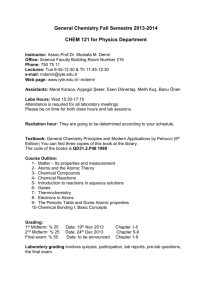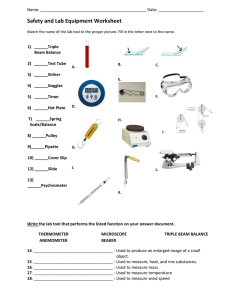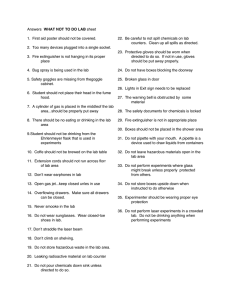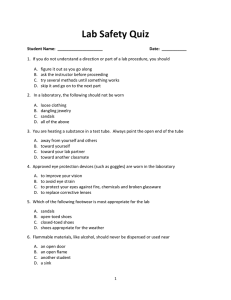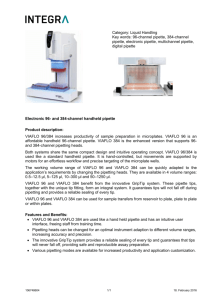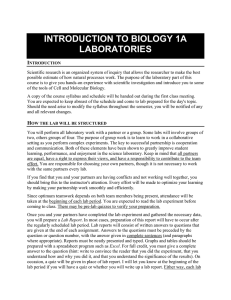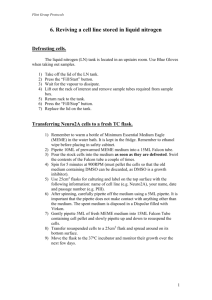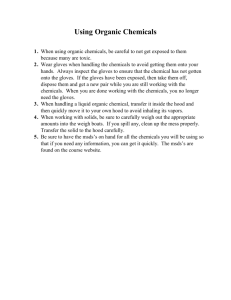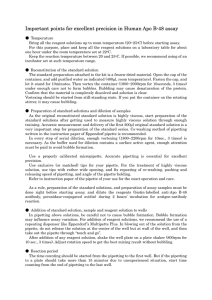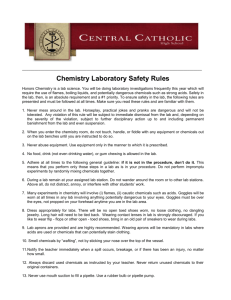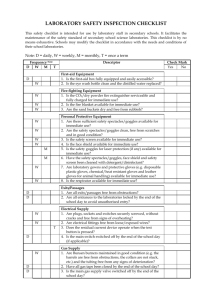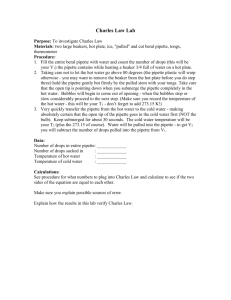Media containing growth-promoting substances that are necessary
advertisement
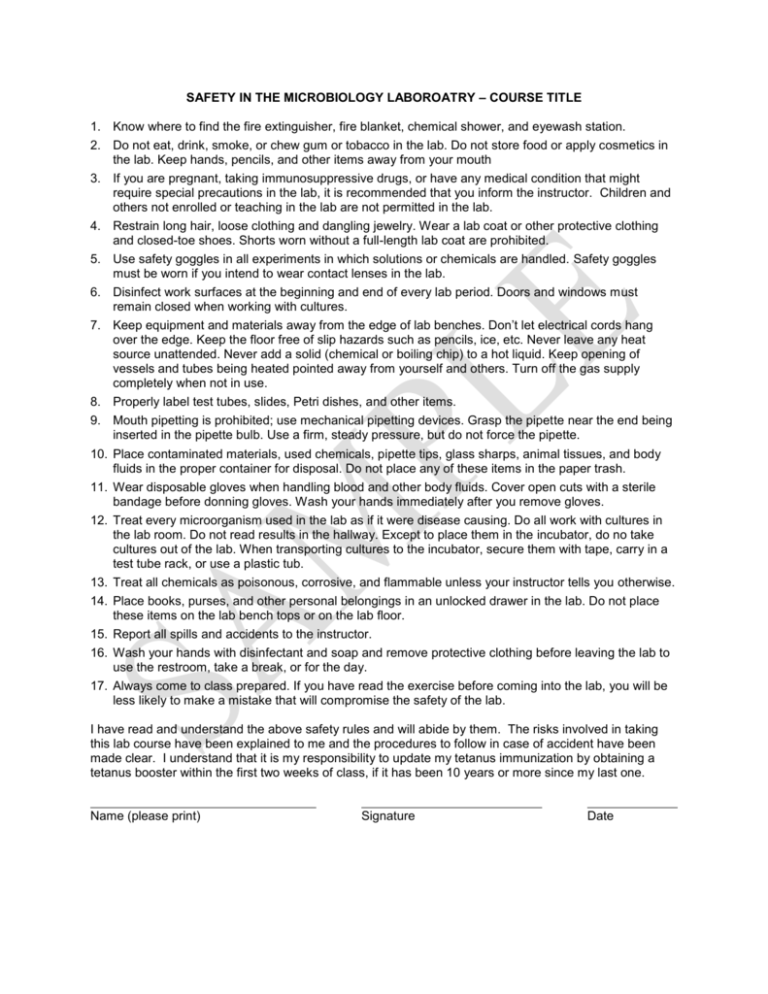
SAFETY IN THE MICROBIOLOGY LABOROATRY – COURSE TITLE 1. Know where to find the fire extinguisher, fire blanket, chemical shower, and eyewash station. 2. Do not eat, drink, smoke, or chew gum or tobacco in the lab. Do not store food or apply cosmetics in the lab. Keep hands, pencils, and other items away from your mouth 3. If you are pregnant, taking immunosuppressive drugs, or have any medical condition that might require special precautions in the lab, it is recommended that you inform the instructor. Children and others not enrolled or teaching in the lab are not permitted in the lab. 4. Restrain long hair, loose clothing and dangling jewelry. Wear a lab coat or other protective clothing and closed-toe shoes. Shorts worn without a full-length lab coat are prohibited. 5. Use safety goggles in all experiments in which solutions or chemicals are handled. Safety goggles must be worn if you intend to wear contact lenses in the lab. 6. Disinfect work surfaces at the beginning and end of every lab period. Doors and windows must remain closed when working with cultures. 7. Keep equipment and materials away from the edge of lab benches. Don’t let electrical cords hang over the edge. Keep the floor free of slip hazards such as pencils, ice, etc. Never leave any heat source unattended. Never add a solid (chemical or boiling chip) to a hot liquid. Keep opening of vessels and tubes being heated pointed away from yourself and others. Turn off the gas supply completely when not in use. 8. Properly label test tubes, slides, Petri dishes, and other items. 9. Mouth pipetting is prohibited; use mechanical pipetting devices. Grasp the pipette near the end being inserted in the pipette bulb. Use a firm, steady pressure, but do not force the pipette. 10. Place contaminated materials, used chemicals, pipette tips, glass sharps, animal tissues, and body fluids in the proper container for disposal. Do not place any of these items in the paper trash. 11. Wear disposable gloves when handling blood and other body fluids. Cover open cuts with a sterile bandage before donning gloves. Wash your hands immediately after you remove gloves. 12. Treat every microorganism used in the lab as if it were disease causing. Do all work with cultures in the lab room. Do not read results in the hallway. Except to place them in the incubator, do no take cultures out of the lab. When transporting cultures to the incubator, secure them with tape, carry in a test tube rack, or use a plastic tub. 13. Treat all chemicals as poisonous, corrosive, and flammable unless your instructor tells you otherwise. 14. Place books, purses, and other personal belongings in an unlocked drawer in the lab. Do not place these items on the lab bench tops or on the lab floor. 15. Report all spills and accidents to the instructor. 16. Wash your hands with disinfectant and soap and remove protective clothing before leaving the lab to use the restroom, take a break, or for the day. 17. Always come to class prepared. If you have read the exercise before coming into the lab, you will be less likely to make a mistake that will compromise the safety of the lab. I have read and understand the above safety rules and will abide by them. The risks involved in taking this lab course have been explained to me and the procedures to follow in case of accident have been made clear. I understand that it is my responsibility to update my tetanus immunization by obtaining a tetanus booster within the first two weeks of class, if it has been 10 years or more since my last one. Name (please print) Signature Date
